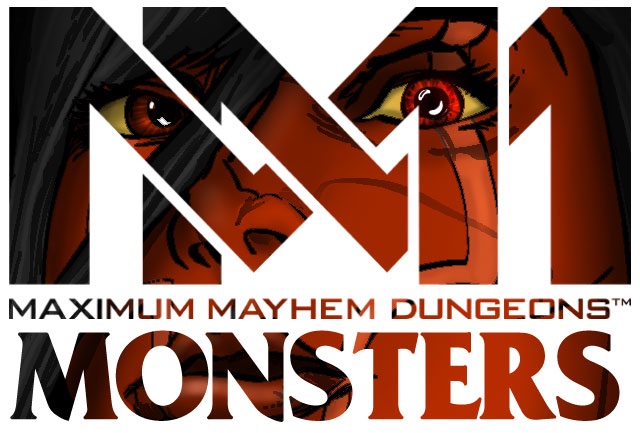 Rule's Variant: Beginning Hit Points
Rule's Variant: Beginning Hit PointsAll characters at first level begin with a number of hit points equal to their constitution score plus their constitution modifier. Then, as they advance in class levels, they roll the appropriate hit dice per character class [I. E. d4, d6, d8, d10, d12] and add their constitution modifier to their hit point total. This rules variant also extends to humanoid and monster races capable of advancing in class levels as well. [I.E. Blue Goblins, Centaurs, Dromites, Drow, Gnolls, Harpy, Lizardfolk, Orcs, Kobolds, etc.]
Flow Chart: Hit Points [17] = Constituion Score/Attribute [15] + Constitution Modifier [+2]
Rules Variant: Languages and d20 RPG MechanicsLanguage is something that is assimilated and thus developed over time with use and practice.
It's not a training course.
The use and assignment of additional languages as an all-or-nothing skill and not a feat to some degree is absurd. By removing "speak languages" from the character skill alotment as it is and re-assigning the skill to stack with a series of specialty feats, the player can learn to speak a non-native language outside his country, nation, or immediate geography.
To begin, the character acquires the number of languages equal to his intelligence modifer plus his native tongue and trade language as per the Player's Handbook Third Edition Revised or the Pathfinder Rules Companion. The intelligence modifier covers all three aspects of his first block of core languages. However, speaking another language costs one skill point. A really simple task of pattern recognition and memory. However, speaking and reading another foreign language requires a cost of two skill points per language. Speaking, reading and writing a foreign language requires a cost of three points. The later requires off-time, much like martial weapons training or vocational training to improve a craft.
Linguistics, as a skill, conforms as detailed as per the Pathfinder Rules Companion, Pgs. 67-68. Except for the point cost, speaking, reading and writing are accumulated by a seperate point cost each. DM's wil need to adjust the amount of skill points a player receives with every new level.
In addition to what is detailed in the Pathfinder Rules Companion, the linguistics skill can be use to learn the dialects, idiosyncrasies and slang of an approximate geography. In addition, the linguistics skull can be used to create and identify written forgeries. It can not however be used to decphier scripts, encrypt documents, or break codes and other encryptions.
Dechiper Script will remain a seperate skill outside the field of linguistucs.
Assimilate Language- Character is well versed in a spoken, written, and foreign language not indigenous and non-migratory to his native homeland. He receives +01 insight bonus to his Knowledge [arcane, history, religion] skill or his linguistic skill.
Bi-Lingual- The character was raised in a family or community where two languages were commonly used. Common language pairs could be English/Spanish in the American southwest or English and French near French-Canada in a modern world campaign setting. In a fantasy setting, it could be an human/elven cultural metropolis, a human/dwarven war citadel, a human/halfling shire, or a human/orc nomadic warband.
Encryptologist- You have a mathematical knack for creating and breaking codes. You receive a +02 insight bonus to your linguistic or decipher script skill for the purpose of "breaking the code" and translating encrypted documents.
Rules Variant: Ring UseThe character can wear the number of rings at a minimum of 2, but after third level can wear an additional ring equal to the total number of character levels stacked against the spell level or levels used to cast and create the ring. For example, a twelfth level wizard can wear any number of magical rings as long as the combination of spell levels does not exceed twelve. He may wear three rings enchanted with fourth level spells each, or three rings enchanted with two fifth level spells and one second level spell or three rings enchanted with one seventh, one third, or one second level spell.
This rules variant made be used in conjunction with a
Hand of Glory which can wear an additional ring of any enchantment.
A Simple Formula: Character level = spell level of the ring or the ring's highest magical ability.
 The 20 Plots1. Quest
The 20 Plots1. QuestThe hero searches for something, someone, or somewhere. In reality, they may be searching for themselves, with the outer journey mirrored internally. They may be joined by a companion, who takes care of minor detail and whose limitations contrast with the hero's greater qualities.
2. Adventure The protagonist goes on an adventure, much like a quest, but with less of a focus on the end goal or the personal development of hero. In the adventure, there is more action for action's sake.
3. PursuitIn this plot, the focus is on chase, with one person chasing another (and perhaps with multiple and alternating chase). The pursued person may be often cornered and somehow escape, so that the pursuit can continue. Depending on the story, the pursued person may be caught or may escape.
4. RescueIn the rescue, somebody is captured, who must be released by the hero or heroic party. A triangle may form between the protagonist, the antagonist and the victim. There may be a grand duel between the protagonist and antagonist, after which the victim is freed.
5. EscapeIn a kind of reversal of the rescue, a person must escape, perhaps with little help from others. In this, there may well be elements of capture and unjust imprisonment. There may also be a pursuit after the escape.
6. RevengeIn the revenge plot, a wronged person seeks retribution against the person or organization which has betrayed or otherwise harmed them or loved ones, physically or emotionally. This plot depends on moral outrage for gaining sympathy from the audience.
7. The RiddleThe riddle plot entertains the audience and challenges them to find the solution before the hero, who steadily and carefully uncovers clues and hence the final solution. The story may also be spiced up with terrible consequences if the riddle is not solved in time.
8. RivalryIn rivalry, two people or groups are set as competitors that may be good hearted or as bitter enemies. Rivals often face a zero-sum game, in which there can only be one winner, for example where they compete for a scarce resource or the heart of a single other person.
9. UnderdogThe underdog plot is similar to rivalry, but where one person (usually the hero) has less advantage and might normally be expected to lose. The underdog usually wins through greater tenacity and determination (and perhaps with the help of friendly others).
 10. Temptation
10. TemptationIn the temptation plot, a person is tempted by something that, if taken, would somehow diminish them, often morally. Their battle is thus internal, fighting against their inner voices which tell them to succumb.
11. MetamorphosisIn this fantastic plot, the protagonist is physically transformed, perhaps into beast or perhaps into some spiritual or alien form. The story may then continue with the changed person struggling to be released or to use their new form for some particular purpose. Eventually, the hero is released, perhaps through some great act of love.
12. TransformationThe transformation plot leads to change of a person in some way, often driven by unexpected circumstance or event. After setbacks, the person learns and usually becomes something better.
13. MaturationThe maturation plot is a special form of transformation, in which a person grows up. The veils of younger times are lost as they learn and grow. Thus the rudderless youth finds meaning or perhaps an older person re-finds their purpose.
14. LoveThe love story is a perennial tale of lovers finding one another, perhaps through a background of danger and woe. Along the way, they become separated in some way, but eventually come together in a final joyous reunion.
15. Forbidden LoveThe story of forbidden love happens when lovers are breaking some social rules, such as in an adulterous relationship or worse. The story may thus turn around their inner conflicts and the effects of others discovering their tryst.
16. SacrificeIn sacrifice, the nobler elements of the human sprit are extolled as someone gives much more than most people would give. The person may not start with the intent of personal sacrifice and may thus be an unintentional hero, thus emphasizing the heroic nature of the choice and act.
17. DiscoveryThe discovery plot is strongly focused on the character of the hero who discovers something great or terrible and hence must make a difficult choice. The importance of the discovery might not be known at first and the process of revelation be important to the story.
18. Wretched ExcessIn stories of wretched excess, the protagonist goes beyond normally accepted behavior as the world looks on, horrified, perhaps in realization that 'there before the grace of God go I' and that the veneer of civilization is indeed thin.
19. AscensionIn the ascension plot, the protagonist starts in the virtual gutter, as a sinner of some kind. The plot then shows their ascension to becoming a better person, often in response to stress that would defeat a normal person. Thus they achieve deserved heroic status.
20. DescensionIn the opposite to ascension, a person of initially high standing descends to the gutter and moral turpitude, perhaps sympathetically as they are unable to handle stress and perhaps just giving in to baser vices.
See alsoRonald B. Tobias, 20 Master Plots, and how to build them, Cincinnati: Writer's Digest Books, 1993.
Ronald Tobias, in his popular and practical book, 20 Master Plots, and how to build them, describes 20 common story plots and gives lots of detail on how to construct complete stories around them.
http://changingminds.org/disciplines/storytelling/storytelling.htmhttp://changingminds.org/disciplines/storytelling/characters/characters.htmhttp://changingminds.org/disciplines/storytelling/devices/devices.htmhttp://changingminds.org/disciplines/storytelling/plots/tobias_plots.htm










































